2006 - Creating a Housefly
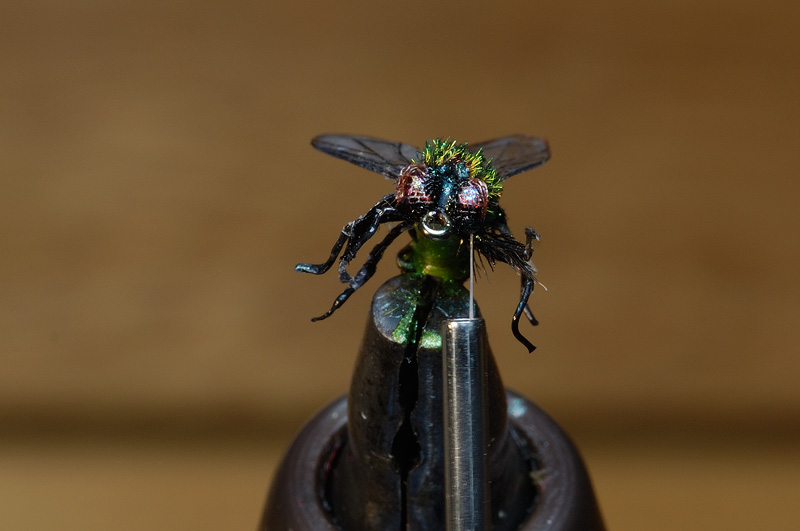
While lazily fly fishing for bluegills this summer I watched hungry fish tracing the movements of flies buzzing over the water. It was truly comical watching fish swim around and around in tightening circles, but persistence paid off, because the instant a fly would land on the edge of a leaf, bam! it was inhaled. Remarkably, these were not mayflies or other aquatic varieties; instead, they were insects similar to common houseflies.
I decided to spend an afternoon making flies, and attempted something more realistic as opposed to impressionistic. The resulting flies will likely find a home in my realistic collection, instead of fishing with. I made six flies that day; each a little bit different and photos were taken during the first attempt, which are presented below.
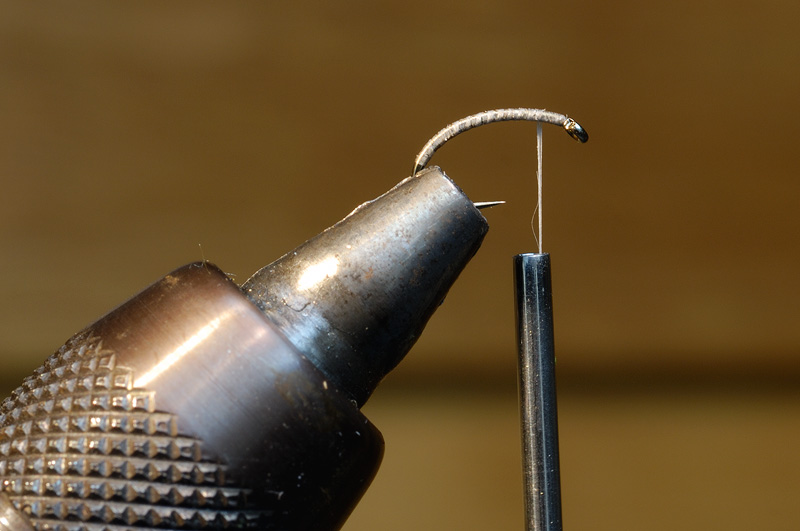
I decided to try using a size 18 curved scud hook, to achieve curvature and shape for the body, and wrapped a base layer of 10/0 thread.
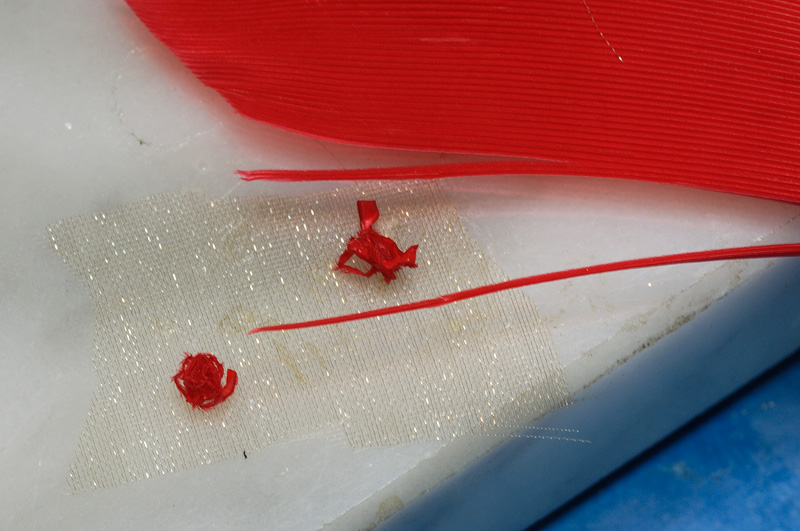
The next step was to fashion some eyes, red ones, similar to the flies encountered on the water. My first experiment was rather unsuccessful, trying to roll red feather fibers into balls, suitable for wrapping in fine mesh.
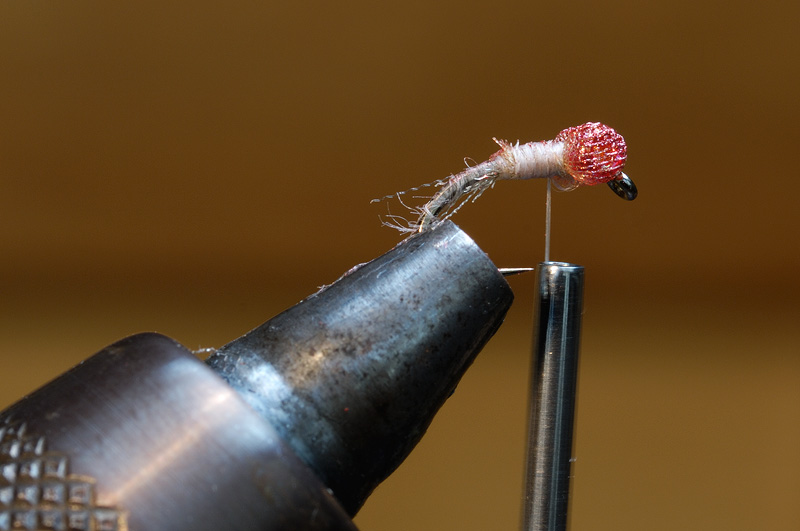
A single piece of mesh was used to grab and hold both beads, which were then tied onto the hook, with figure eight wraps of thread between the eyes to separate them.
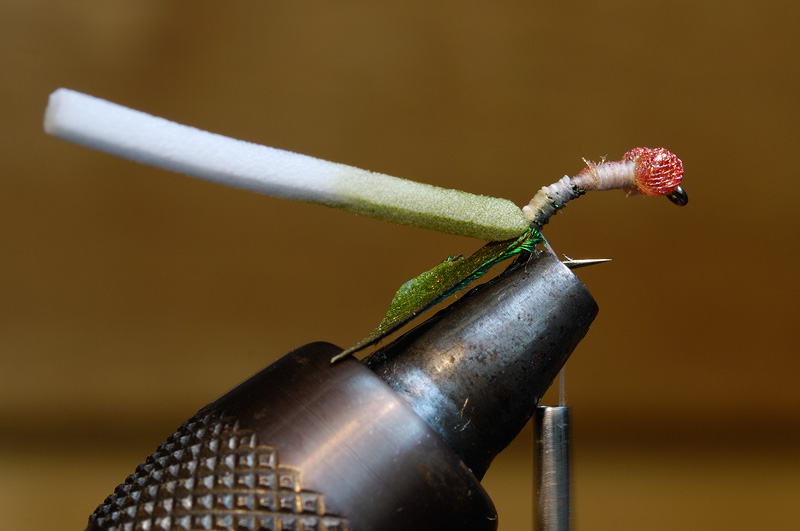
To create the abdomen a green peacock body feather and a strip of foam were used. The underside of the feather was wiped with Flexament, tinted green, and the foam was quickly wiped with a green marker pen before securing onto the hook. The feather was tied down at the tips, and then the foam was added.
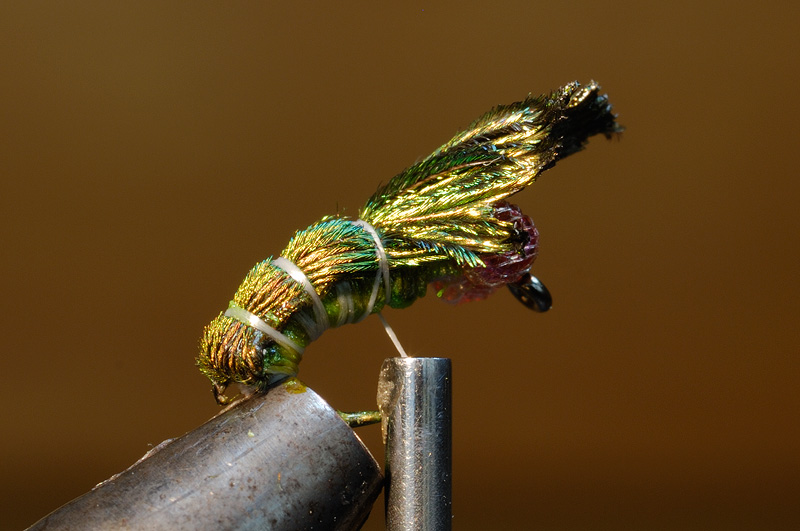
The foam and feather were pulled forward and the segmenting began. Three wraps of thread over the top of the feather, then a couple of wraps underneath progressing forward, then three more over the top, until the abdomen was completed. The excess feather and foam was trimmed away with fine-tipped scissors.
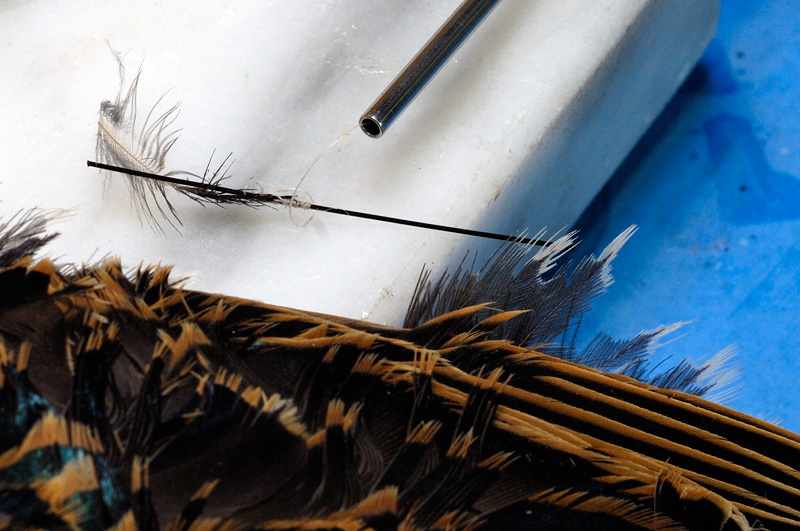
Making legs was challenging, basically because they are so small. Single black bristles from a small hand broom were used as well as the smallest feathers I had, from the neck of a Starling. First step is wrap some thread onto the leg material, and then tie Starling feather tips onto the bristles.
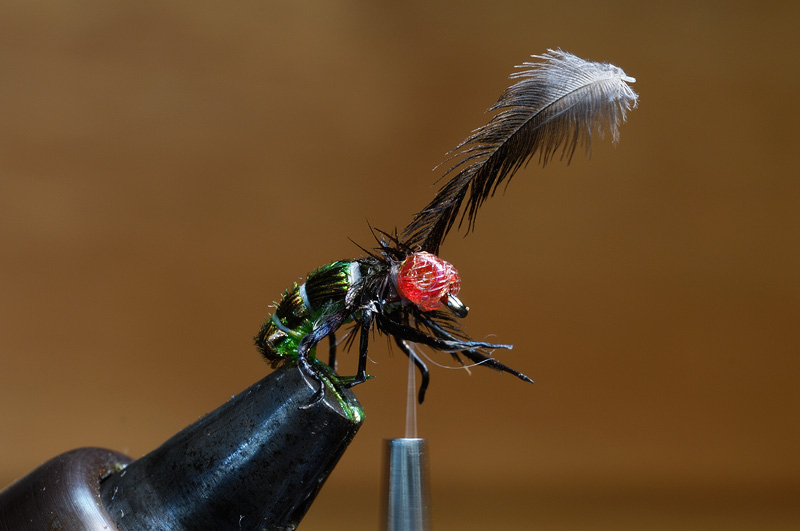
The legs were held along the side of the fly, and secured to the hook. After each leg was secured, the thread was cut and used for making and tying additional legs.
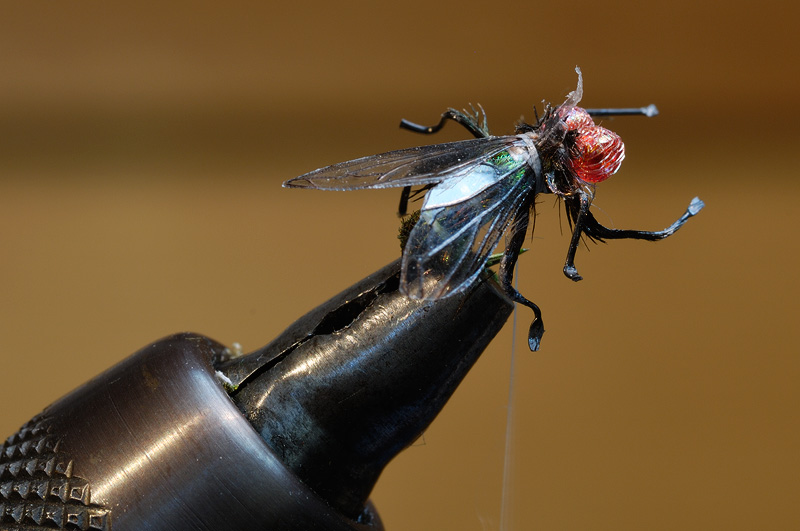
A set of realistic wings are tyed onto the fly

Once both wings were secured to the hook with thread, a second starling neck feather and peacock body feather were tied down at the tips, directly behind the eyes. The wings are lifted up and away from the body making it easier to get the final segmentation wrap behind the wings, with peacock covering the wing tie-in points.
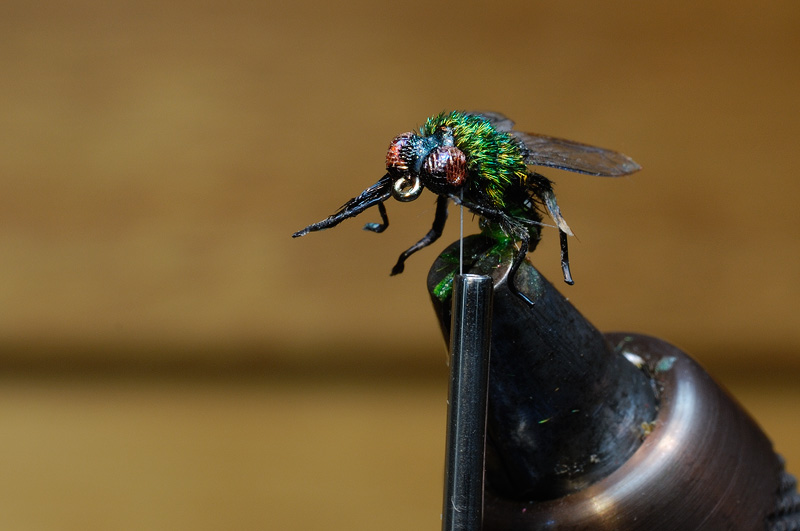
A drop of Flexament was placed between the eyes, and after drying, was touched with a black marker.


I really had fun tying this fly, and now have visions of holding it just above the waters surface, swinging around and around, trying to make the bluegills dizzy.
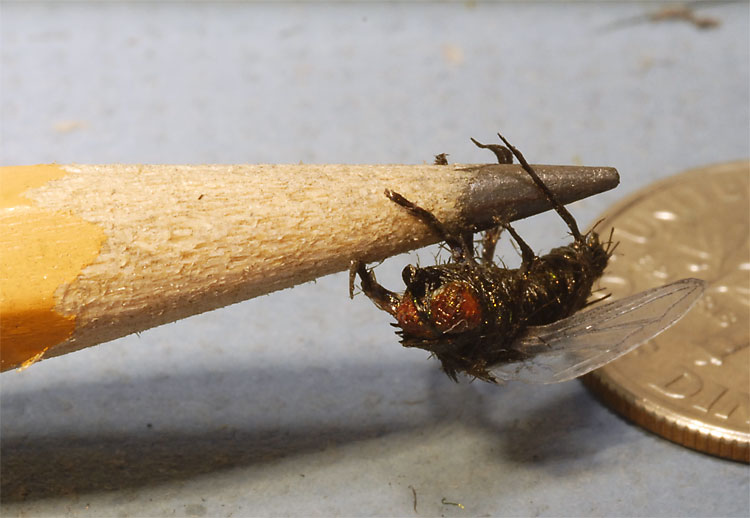
Another realistic house fly
Realistic houseflies were created for the movie The Curious Case
of Benjamin Button,
and filmed in a scene with Brad Pitt.
Please
note: All content (including source) on this site are protected
by copyright.
Unauthorized use is prohibited.

